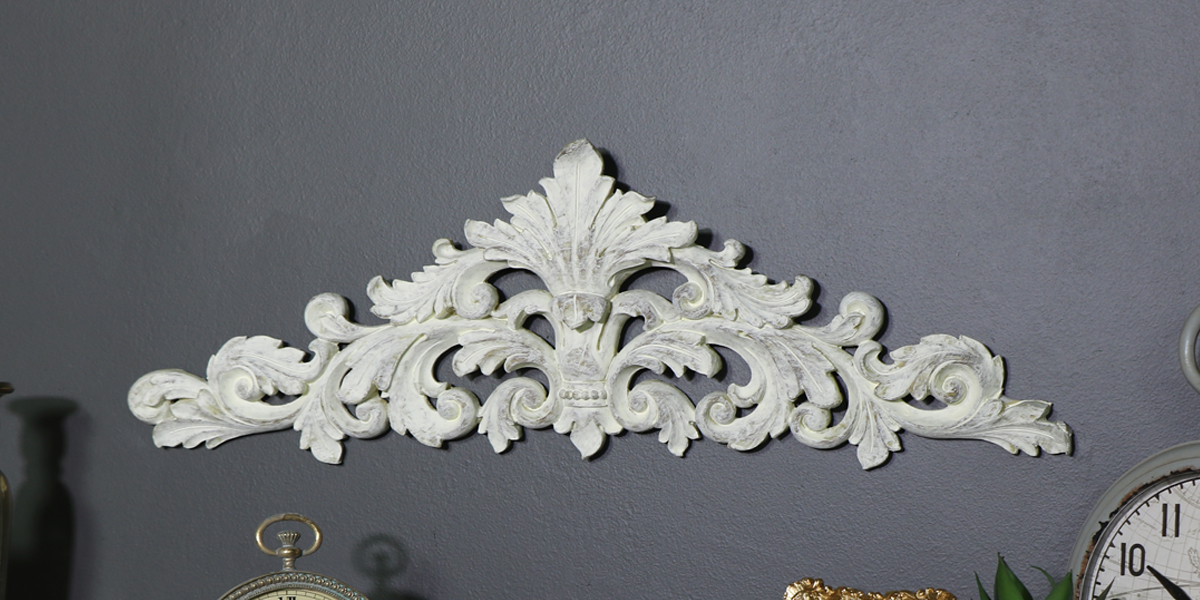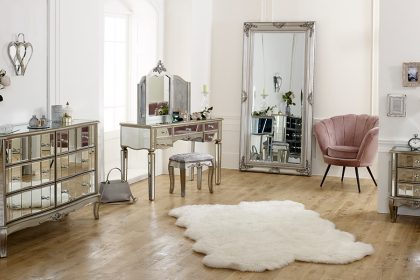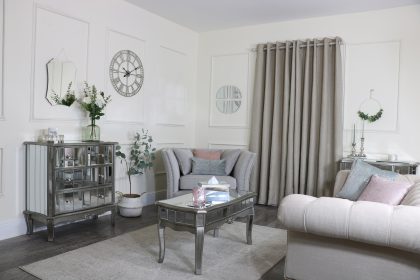What comes to mind when you think of French furniture?
It could be items like the iconic chaise lounge, the exquisite canopy bed, or the elegant console table. Or it could be techniques of sumptuous upholstery, elaborate carvings and gilded extravagance.
Whatever your interpretation of French furnishings, the overall impression is a sense of grandeur and intricate craftsmanship.
In this article, we’ll walk you through the history of French furniture and how to achieve extravagance fit for the Palace of Versailles in your home.
The History of French Furniture
France, in particular the capital city of Paris, has long been the epicentre of all things style, fashion and trendsetting.
From eccentric Art Nouveau to bold Art Deco, the Parisian taste has permeated various aspects of culture, including clothing, art and interior design.
You only have to look at the fashion houses that continue to dominate our luxury shopping market to see this influence playing out.
The term ‘French-style furniture’, however, is most often associated with the era of captivating royal splendour brought about by the French monarchy between the 17th and 18th centuries.
This era provided the widely popular Baroque and Rococo styles, which spread across Europe and are still referenced in furniture design today.
The Baroque Period – Louis XIV (1661-1700)
The Baroque era was a performance of courtly splendour and immense displays of wealth.
This artistic and architectural movement focused on creating luxurious interiors that were strictly reserved for the royal palace of Louis XIV and the opulent mansions of the aristocracy around Paris.
There was a popularisation of lavish ornamentation techniques such as carving, gilding and inlaying across all interior features, from ceilings to cabinets.
The traditional Baroque motifs that adorned these pieces consisted of cherubs, scrolls, fruit, delicate flowers and laurel wreaths.
Consider incorporating our carved wall art into your decor to emulate this period, or invest in furniture that bears these traditional elements, such as the Pays Blanc range.
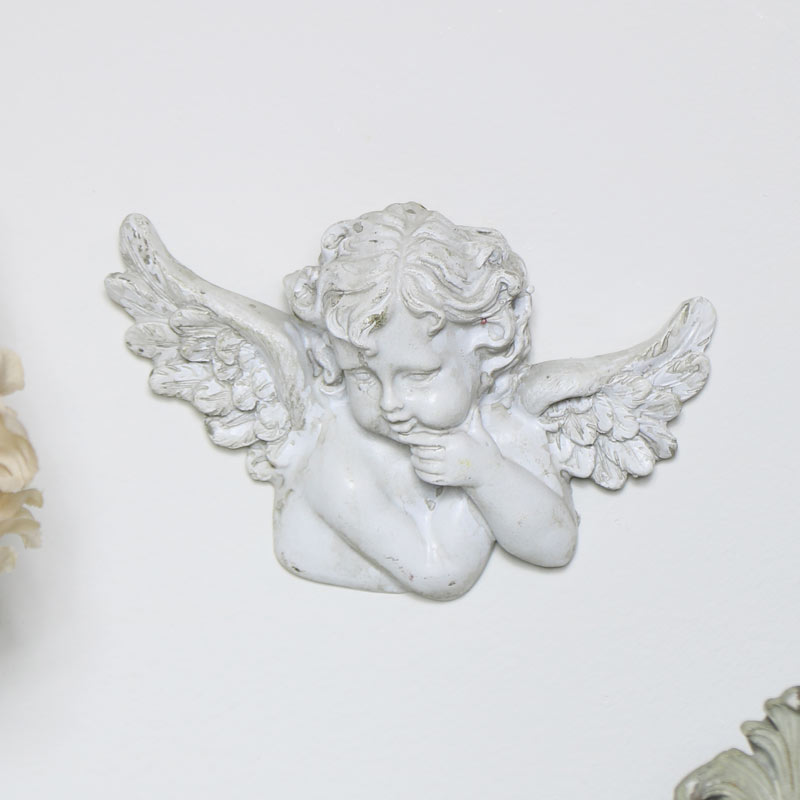
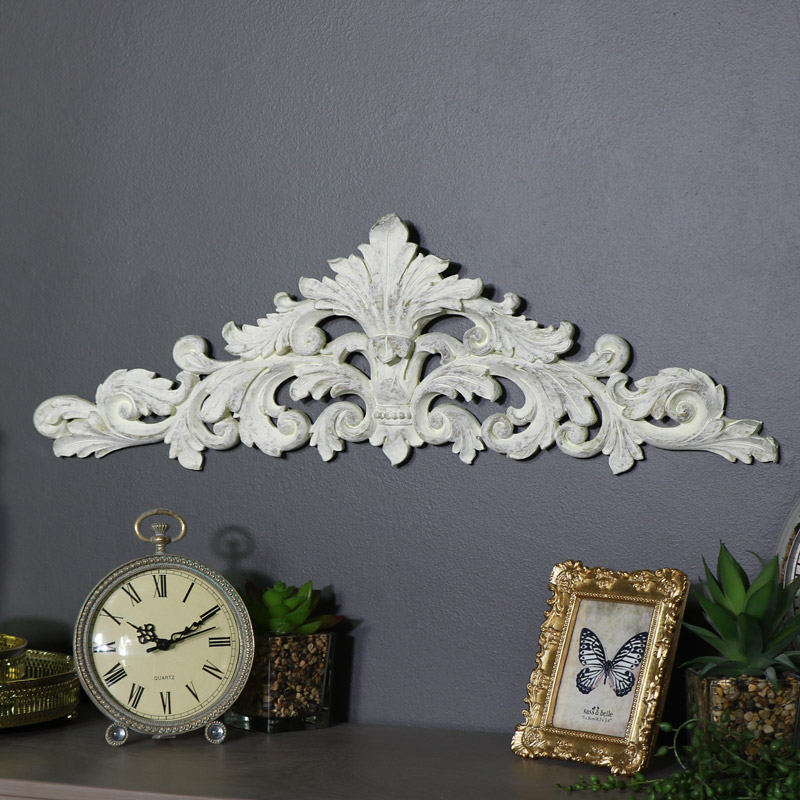
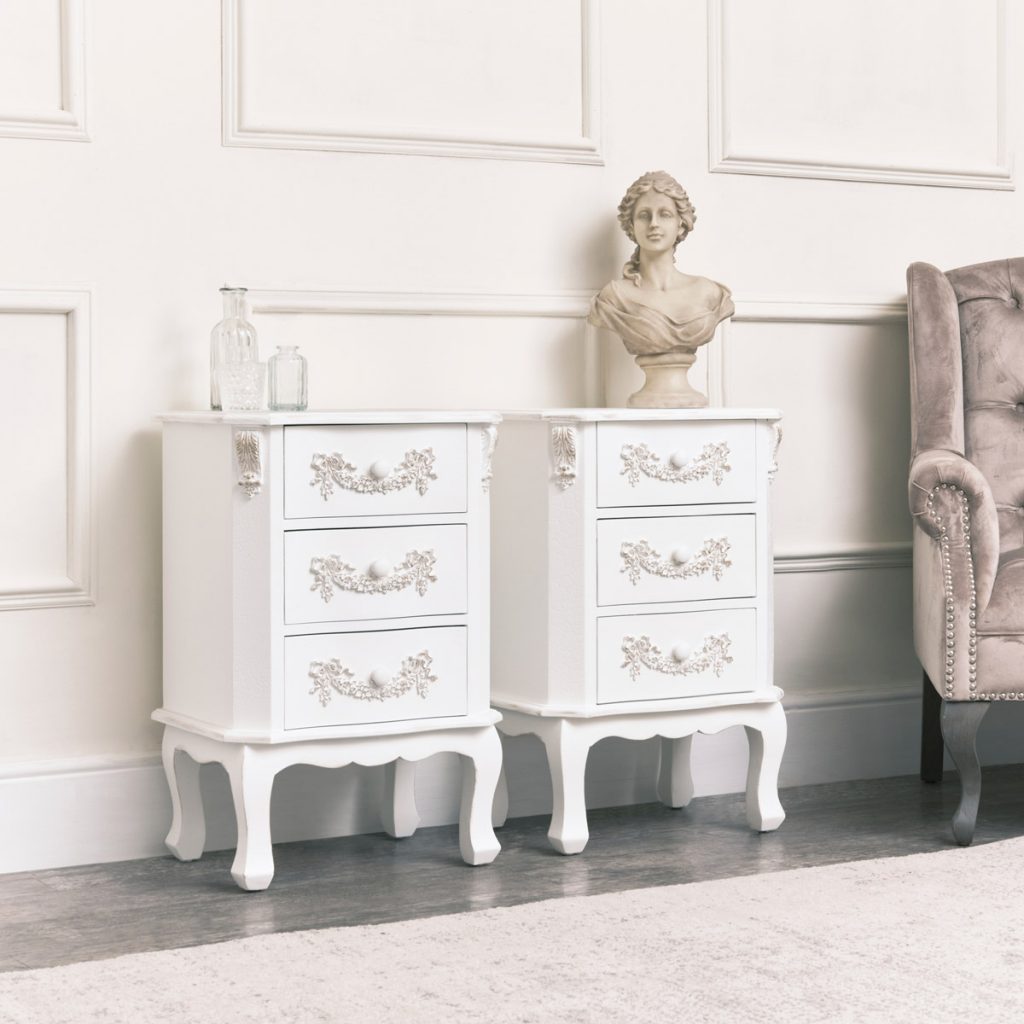
Throughout this era, there was also a significant focus on sumptuous textiles, not necessarily for comfort but to boast unparalleled wealth and grandeur.
Stools and benches were decorated with the finest fabrics like velvet, silk, damask, and gold brocade, then finely secured with large gold, silver or brass nails.
You can see this influence seep into modern seating, evidenced in the bold velvet upholstered chair shown below.
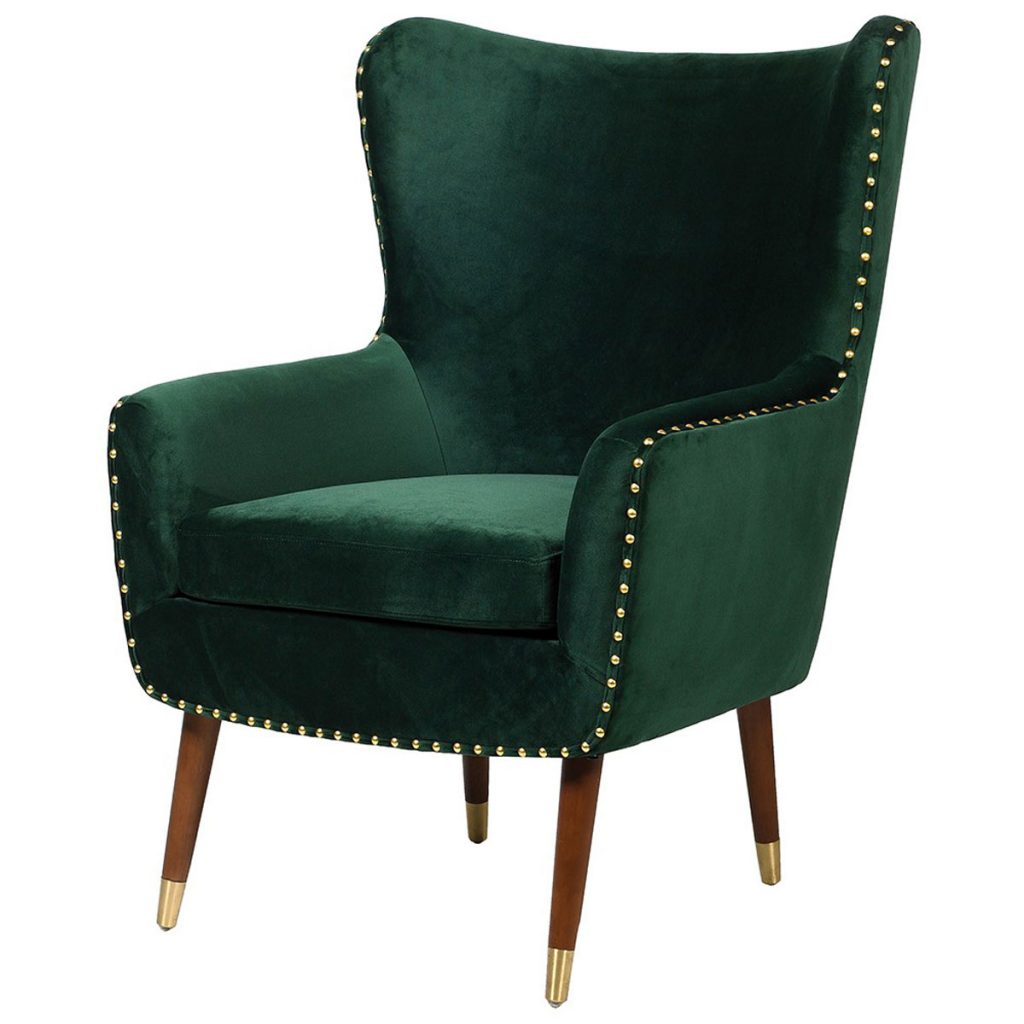
Finally, one of the most prominent furnishings that emerged during the Baroque period was the intricate chest or ‘commode’.
Characterised by their low height and short legs, these chests of drawers are incredibly distinctive and indicative of the era.
The design is so influential that it remains to this day, either as a deliberate nod to the past, such as the Lila collection – or as a creative fusion of styles, as demonstrated in the Moroccan-inspired Monique range.
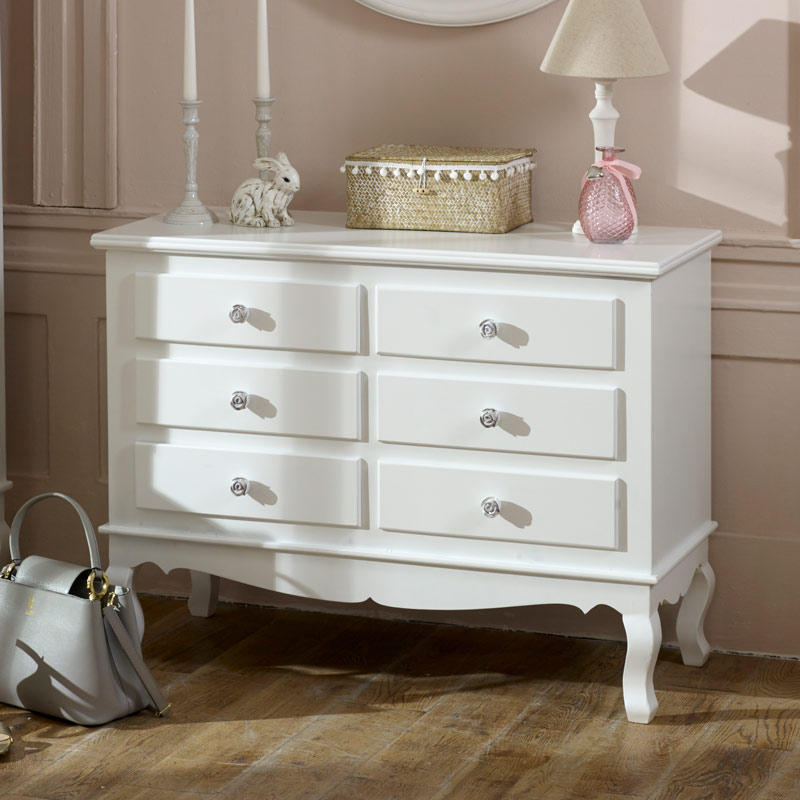

The Rococo Period – Louis XV (1730-1760)
By Louis XV’s reign, the Enlightenment was at its peak. This cultural shift saw importance placed on progress, reason and the value of human happiness.
It was also a time when women gained prominence in the court, influencing the style and aesthetics of the era.
The Rococo period emerged, distinguished by its feminine and romantic look.
The design was still ornate but placed greater emphasis on flowing curves, graceful refinement, and comfort.
This was the era of the iconic ‘chaise longue’ and bowed ‘cabriole legs’ that supported tables, cabinets, wardrobes, and other furniture pieces.
These elegantly curved legs can be seen in several of our furniture sets, including the incredible Pays Blanc collection, which is ideal for furnishing your bedroom.
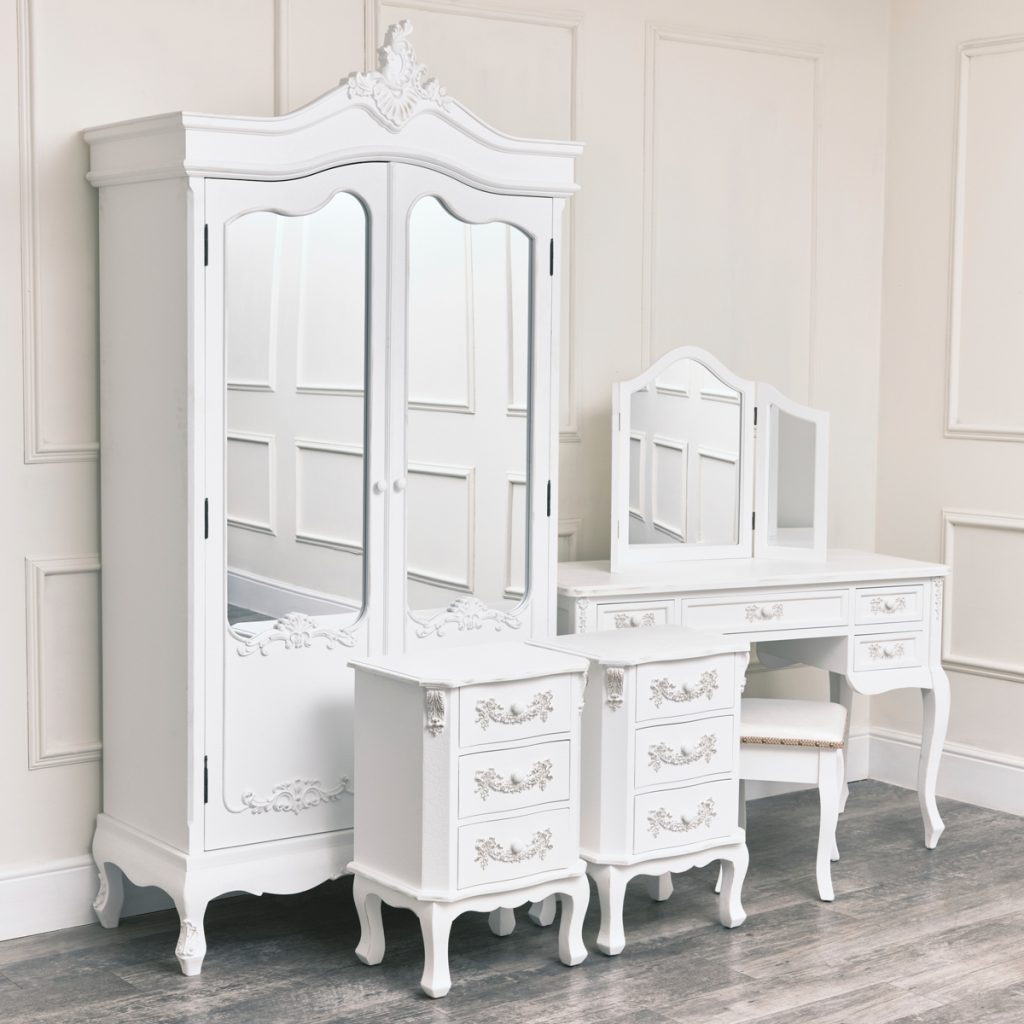
The influence of women also meant that decorative vanities and dressing tables took the court by storm, particularly if the pieces featured secret drawers and hidden storage for intrigue and practicality.
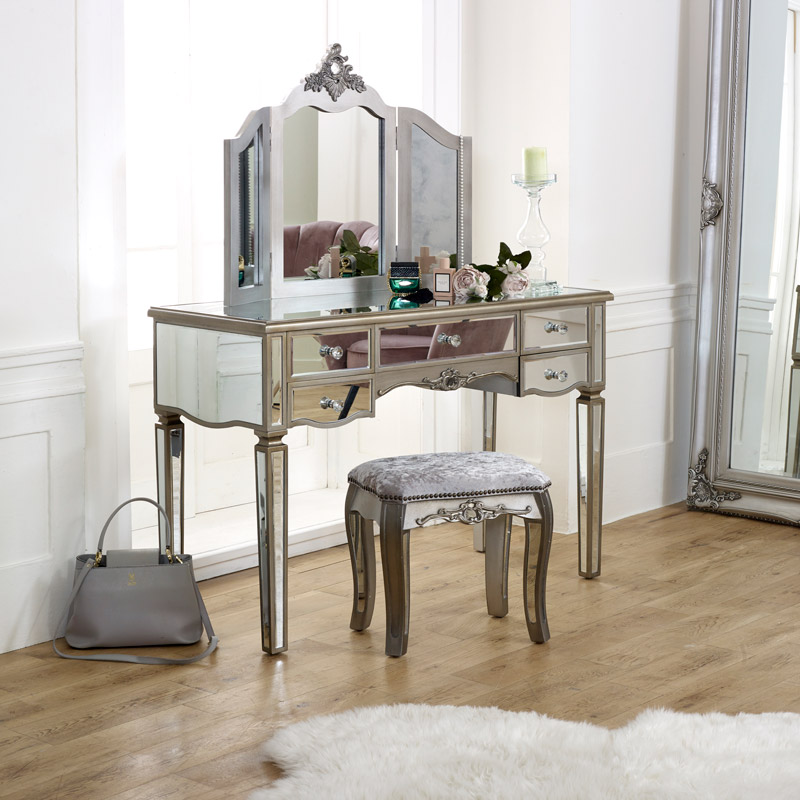
If you wish to replicate the gleaming opulence of Versailles, we recommend looking at our mirrored dressing tables, such as those in the Tiffany range.
These dressing tables feature reflective surfaces that mimic the beautiful gilded glamour that filled the French royal court.
Get Your Hands on Incredible French Furniture.
Now that you know the origins of these fabulous furnishings, why not integrate them into your decor?
One of the best places to emulate the French design is in the bedroom; this is because you can easily incorporate elements associated with the timeless trend.
From wardrobes to dressing tables or ornate mirrors for your walls – the opportunities are endless.
Fortunately, we ship our French furniture across the UK and internationally, so you can browse the entire collection and begin planning your Parisian-inspired boudoir.
For styling tips and updates on interior design trends, scan other posts on the Melody Maison blog or contact us for more information about our products.

